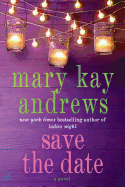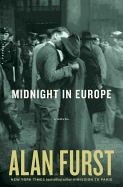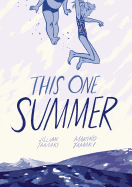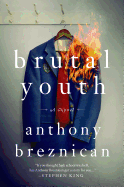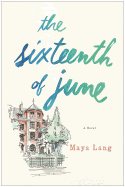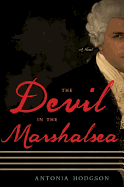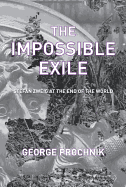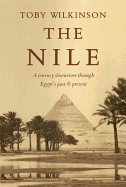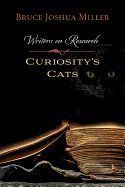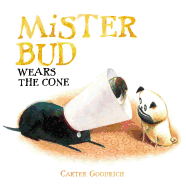Tuesday, June 17, 2014
When the co-founder of iconic Square Books in Oxford, Miss., writes a novel, the occasion garners attention--much deserved for Lisa Howorth's Flying Shoes (see our review below). Howorth grew up in Washington, D.C., "the center of ridiculousness and cynicism in the universe, but also of monumental events in the '60s," and these things shaped her thinking and writing. Intrigued by Faulkner, blues and civil rights, she moved to Oxford in 1972, and opened Square Books with her husband, Richard, in 1979. She's been a librarian, taught art history, written freelance, raised three children and worked on her novel.
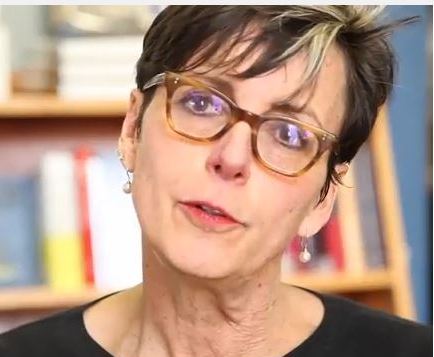 The title, Howorth explains, was "borrowed from a song by the late Townes Van Zandt, with the blessing of his son, J.T., also a great musician. It's a lovely, simple song about sadness, and trying to escape it."
The title, Howorth explains, was "borrowed from a song by the late Townes Van Zandt, with the blessing of his son, J.T., also a great musician. It's a lovely, simple song about sadness, and trying to escape it."
Howorth describes her main character, Mary Byrd Thornton: "Her bad-a**ery is just camouflage and defense... she cusses a lot, does some sketchy things and hangs with serious bad-a**es, but this is more out of insecurity, guilt, anger and perhaps some damage by events in her earlier life. She's also got that old 20th-century malaise--bored with a lot of her comfortable life, and calling bulls**t on things. But she's a softie--someone who worries about the snails she considers drowning in beer, but capable of punching you out. She'd like to be a good wife and mother; it just doesn't come easily to her."
Why did Howorth choose fiction to tell a true story? "My stepbrother's murder is the only factual thing in the novel--all the side stories, events and characters are fictional. It was too depressing to write only about the murder, and I thought the breadth of a novel would attract the greatest number of readers to the story. I had other things I wanted to write about, too--race, history, the intriguing small town that Oxford still was in the '90s." --Marilyn Dahl, editor, Shelf Awareness for Readers
Save the Date
by Mary Kay Andrews
Talented wedding florist Cara's business is making the dreams of happily engaged couples come true (one centerpiece at a time), but she isn't having much luck in love herself. Her cheating ex-husband keeps bugging her, the leading florist in town is trying to put her out of business and she just bumped into a sexy stranger named Jack who attempted to steal her beloved poodle. As Cara struggles to keep her flower shop afloat amidst debt and demanding Savannah brides, it seems even her trusted bestie and gay assistant, Bert, is starting to flake on her.
This beleaguered heroine from veteran novelist Mary Kay Andrews (Christmas Bliss) will be irresistible to both Andrew's longtime readers and the uninitiated alike. It's hard not to sympathize with Cara as she navigates the pitfalls of being an Ohio outsider in often-hard-to-crack Georgia society. Andrews's deft descriptions of the floral design world are as fascinating as the men and money troubles that befall Cara.
To tackle bridezillas, runaway brides and her own dwindling checking account, Cara must morph from a florist into a superhero as she tries to pull off the hugest event of her career. The many twists keep the plot bouncing along, and it's easy to root for the industrious and creative Cara. Andrews's latest will have readers entranced, waiting to see if Cara will triumph over her many obstacles before the last petal drops. Save the Date definitely deserves a spot on your calendar. --Natalie Papailiou, author of blog MILF: Mother I'd Like to Friend
Discover: An intriguing tale of wild weddings in Georgia from veteran Mary Kay Andrews.
Chaplin & Company
by Mave Fellowes
Mave Fellowes's debut effort is a literary tour de force that combines the heavy themes of grief, abandonment and friendship into an engrossing coming-of-age story that moves with the cinematic resonance and grace of the greatest silent films. Fellowes's protagonist is the recently orphaned, 18-year-old Odeline Milk, who has just moved to London in the "baggy pinstripe suit of the 1920s banker, leather brogues and bowler hat" to pursue her dream of becoming a mime. Armed with an inheritance, an A-to-Z guide to the city, and the few possessions left to her by her deceased mother, the stuck-up and antisocial Odeline takes refuge aboard an aging narrowboat called the Chaplin & Company, surviving on cheese and crackers as she struggles to practice her artistry. She is eager to connect with her absentee father, the circus clown Odelin, whom she idolizes and on whom she pins her future hopes.
Along the way, Odeline meets a motley crew of characters whose own fortunes and pain mirror the dreariness and snail-like pace of canal life: Vera, a political exile, refugee and barge café waitress, who seeks companionship despite its dangers; John Kettle, the chauvinistic and drunken canal warden, who is looking to atone for past wrongs; and the tattooed and musically gifted Ridley, who is Odeline's levelheaded neighbor and secret crush. Sharing Odeline's slapstick passage into adulthood is the boat itself, an almost living and breathing embodiment of its past owners' desires.
Fellowes uses Odeline's wide-eyed innocence and sheltered ignorance as the comic foil for the novel's more tragic figures, yet even as the words and scenes play out, she wastes no emotion. Chaplin & Company moves like the reel of everyday life, and Fellowes's true gift is in showing how the smallest experience can bring about life-changing transformations. --Nancy Powell, freelance writer and technical consultant
Discover: A comedic and touching waterborne coming-of-age novel of a young mime bound for London.
Brutal Youth
by Anthony Breznican
At first reminiscent of The Chocolate War, Robert Cormier's YA classic about bullying in a Catholic high school, Anthony Breznican's Brutal Youth soon establishes itself as a more broadly focused--and darkly funny--fiction debut.
It's 1991, and St. Michael the Archangel High School is in decline: the building is crumbling, enrollment is dwindling and, after a frequently bullied student snaps and terrorizes the campus one spring morning, the parish pastor has stepped up his not-so-secret campaign to have the school shut down. Father Mercedes intends to make St. Michael's principal, Sister Maria, pay for allowing the culture of student-on-student harassment that may have fostered the outburst; for her part, the principal believes that the school's hazing tradition fosters class morale. But the cliquishness and jockeying for status are hardly confined to the students at St. Michael's, where some staff members are returned graduates still living out their adolescent dramas.
Peter, Noah and Lorelei meet on the first day of their freshman year. While they soon unite to support one another against bullies of all stripes, they won't be able to hold together for long. Over the course of the year, each will be ostracized; by spring, one will rise as a school hero, one will find sympathetic acceptance for all the wrong reasons, and one will end up in a place far worse than St. Michael's.
Breznican leavens the bleak premise with sharp, darkly comic dialogue that feels authentic to his well-drawn characters, particularly the adolescents. This quick, unsettling coming-of-age novel blends sympathy and satire with surprising effectiveness. --Florinda Pendley Vasquez, blogger at The 3 R's Blog: Reading, 'Riting, and Randomness
Discover: A notable debut novel about a year of survival in a corrupt Catholic high school.
The Sixteenth of June
by Maya Lang
Maya Lang's debut novel elevates family dysfunction to an art form. The Sixteenth of June, which unfolds over the course of a single day, is moody and poignant while dripping with delectable elements of the absurd. Lang has crafted characters endearing and annoying, admirable and ridiculous. Right when they might be too unsavory, Lang adds a dash of redemption to make them just sympathetic enough.
Nora, a gifted opera singer, has lost passion for her craft and secretly yanks out her hair while refusing to set a wedding date with her nice-guy fiancé. Leopold, her future husband, is the black sheep of his ridiculously wealthy and liberal family; the Portmans throw a yearly soiree to celebrate Irish writer James Joyce, but Leo would rather hide and watch football. Leo's brother, Stephen, a pretentious academic who lives off an allowance from his parents, is Nora's best friend. There's enough angst and intrigue here to make a delicious story, but Lang further flavors the brew by tossing in snooty WASPy mother June and debonair patriarch Michael (who has denied his Jewish heritage since becoming wildly successful on Wall Street).
The characters collide on the morning of a funeral that unfolds into the Portman's annual Bloomsday bash at their mansion. Martinis and mayhem abound as deep secrets are unearthed. The real joy lies in watching a group of characters so accustomed to sweeping any true emotion under the rug react when that rug is suddenly ripped out from beneath their feet. Addictive, outstanding and with many Joycean references, The Sixteenth of June will make readers impatient for Lang's sophomore effort. --Natalie Papailiou, author of blog MILF: Mother I'd Like to Friend
Discover: An outstanding new author whose WASPy characters collide at a funeral and the deluxe literary bash that follows it.
Mystery & Thriller
Midnight in Europe
by Alan Furst
Sophistication and gentility once again travel hand-in-glove with ruthlessness and spying in Alan Furst's 13th historic espionage novel, Midnight in Europe. As readers expect from Furst (Mission to Paris; Spies of the Balkans), his characters stand against evil on a volatile international stage.
Furst writes like the consummate gentleman personified by his hero, Cristián Ferrar, a Spanish émigré living in Paris. It's December 1937, and as the novel opens, Cristián is in New York representing his French law firm. The newspapers are full of reports about the Spanish Civil War and the turmoil in Europe, foreshadowing darker days. Cristián returns to France and is recruited to help in the clandestine efforts to arm the Spanish Republic in its fight against fascism. Quickly we grow to like him, which heightens the tension as he agrees to broker an arms deal. "The world knows and all it does is watch," he says.
Passion for fighting fascists and Nazis does not preclude humor and pursuit of the good life--Django Reinhardt music and popping champagne corks cover the whispers of secrets exchanged. Cristián practices law, visits his family in the countryside and enjoys romantic liaisons, while readers wonder who can be trusted.
Trips on a Paris-to-Berlin night express, in a lumbering Buick bumping along Polish roads, in a stolen arms-laden train, and a heart-pounding voyage on a volatile Odessa-to-Valencia freighter drive the tension to the climax. Readers will be grateful that Furst rewards his hero's virtue with a satisfying conclusion. --Cheryl Krocker McKeon, manager, Book Passage, San Francisco
Discover: A sophisticated espionage thriller about a Parisian lawyer helping the Republic against the fascists during the Spanish Civil War.
The Devil in the Marshalsea
by Antonia Hodgson
Antonia Hodgson's debut novel combines aristocratic honor with a dark chapter of British history for an unforgettable start to a new mystery series.
In 1724, a Briton who got into debt ran the risk of landing in one of the brutal, disease-ridden debtor's prisons. When robbers deprive Tom Hawkins of the gambling winnings that would settle his debt, he is clapped in irons and dragged to the notorious Marshalsea Gaol. Destitute, Tom learns he must pay for his food and lodging if he wants to live in the cleaner, safer side of the prison; otherwise, he's bound for the Common side, where disease, starvation and violence run riot.
Tom accepts an offer of free rent from amoral, mischievous prisoner Samuel Fleet, only to learn Fleet's last roommate was murdered (possibly by Tom's new benefactor). A friend on the outside brokers a deal for Tom: solve the murder and go free. But in a microcosm of corruption and cruelty presided over by a warden known as the Butcher, Tom doesn't know where to begin pointing fingers or whom he can trust. As the bodies pile up, Tom must think quickly or he'll never leave the Marshalsea alive.
Fans of mystery and historic fiction will relish (and shudder at) this gruesomely detailed account of life in debtor's prison, and not just because of the flesh-hungry rats. The hypocrisy of a murder investigation in a facility whose conditions kill its prisoners isn't lost on honorable Tom, a believable, likable sleuth we hope to see again. --Jaclyn Fulwood, blogger at Infinite Reads
Discover: A gentleman's fight to solve a murder (and survive) in 18th-century England's notorious debtor's prison.
Science Fiction & Fantasy
Robogenesis
by Daniel H. Wilson
The next step in evolution may not be a human one. That's the logical premise of Daniel H. Wilson's original Robopocalypse, the popular book that began the story of a world overrun with sapient artificial intelligences bent on the destruction of humankind. In this sequel, the survivors of the machine intelligence war find that the triumph for which they sacrificed everything was only the beginning, as the rogue intelligence known as Archos is alive and well--and building a machine army that will rival the original one in both deadly capacity and brutal variety.
The perspective shifts among the survivors from one chapter to the next, with occasional commentary from the inhuman Archos, which lends a sense of urgency to each terrifying interaction between the humans and this new, more powerful threat. In addition, artificial animals begin appearing in natural habitats, possibly experiments created by some unknown, deep-thinking mind somewhere in the sea.
Wilson pulls no punches in this thrilling tale of survival, with characters doomed from the outset to suffer. Children's eyes are torn out to make way for machine-assisted vision modules. After the death of the original AI in the first novel, all-but-brain-dead soldiers are suddenly freed from the enemy's control but still attached to machines onto which they'd been grafted. Wandering soldiers wonder if it's right to bring new children into this devastated world. The war may be over, but the fight for the planet has just begun. --Rob LeFebvre, freelance writer and editor
Discover: Sapient machines do not have humanity's best interests at "heart."
Biography & Memoir
The Impossible Exile: Stefan Zweig at the End of the World
by George Prochnik
George Prochnik (In Pursuit of Silence) acknowledges that it took him a long time to grasp how much was lost over the course of his family's harrowing flight from Hitler's Vienna. "If only a third of European Jewry survived Hitler, only a tiny fraction of those who did escape made it out with their former identities and sense of their humanity intact," he observes. This sense of immeasurable loss could be due in part to the survivors' silence following their catastrophe. Thus, for Prochnik, the flight of once-famous Austrian writer Stefan Zweig provides a valuable perspective on the insidious costs of exile.
Prochnik's book poignantly depicts Zweig's spiritual impotence. Despite--or because of--his fame, Zweig embodied the archetypal refugee in his inability to cope with what Milan Kundera calls "the unbearable lightness of being"--the sense of utter irrelevance when one is ejected from one's social milieu. Refusing to denounce Hitler publicly, Zweig retreated into his work, which he thought would serve as an effective indictment against the dictator's barbarism. But he didn't escape a horrible regime to reach safety. Rather, Zweig's eight-year odyssey from Austria to England, then to the U.S. and, finally, Brazil--where he committed suicide--showed an inexorable regression from "civilization" toward untamed nature.
Yet exile, like far-flung seeds, can offer redemption years into the future. Entwining the concepts of gardening and Bildung ("education" or "formation"), Prochnik shows that Zweig's exile and death were not futile; Zweig's memoir The World of Yesterday explicitly addresses Vienna's guilt and helps steer his postwar readers from their dark past. --Thuy Dinh, editor, Da Mau magazine
Discover: An indelible meditation on exile and its impact on future generations, using Stefan Zweig's predicament as template.
History
The Nile: A Journey Downriver Through Egypt's Past and Present
by Toby Wilkinson
In The Nile, popular Egyptologist Toby Wilkinson (The Rise and Fall of Ancient Egypt) leads the reader on a historical travelogue that moves from Aswan, home of the river's First Cataract, to Cairo's Gezira Island, from Paleolithic rock drawings to the Arab Spring.
The voyage that shapes The Nile is not simply metaphorical. Wilkinson floats down the river on a dahabiyah--a large luxury boat descended from the royal barges of the pharaohs. Aware that he's taking his place in a historical line of travelers drawn to Egypt by its climate and its ancient civilizations, Wilkinson engages with their commentary as well as his own observations, creating a palimpsest of Nile voyages in the process. (Ancient Greek historian Herodotus and 19th-century British journalist Amelia Edwards are particular favorites.)
Because Wilkinson organizes his work by geography rather than chronology, his narrative is anecdotal almost to the point of stream of consciousness. His combination of scholarship and storytelling allows him to draw unexpected relationships through time. The ruins at Kom Ombo lead to a discussion of the crocodile god, Sobek, then on to ancient Egyptian tales about the dangers of crocodiles, a modern crocodile museum and the impact of both 19th-century Western tourism and the Aswan Dam on the crocodile population in Egypt. Occasionally such temporal leaps are disorienting, but for the most part they are illuminating. Once a reader has learned to navigate the rapids, The Nile is worth the effort. --Pamela Toler, blogging at History in the Margins
Discover: A modern Egyptologist proves that Herodotus was right: Egypt is the gift of the Nile.
Essays & Criticism
Curiosity's Cats: Writers on Research
by Bruce Joshua Miller, editor
Bruce Joshua Miller, editor of Curiosity's Cats: Writers on Research, makes no secret of his discomfort with researchers' increasing dependence on digitized sources. The 13 essays he commissioned for this collection share a common mandate: tell a story about a project that required investigative techniques beyond computer searches. The results could have been extended Luddite shudders against technology or simple exercises in nostalgia. They are neither, though several essays include a variation on "I'm not a Luddite, but..." and the final essay (Marilyn Stasio's "Your Research--or Your Life!") uses nostalgia to pointed effect. Instead, each piece explores the complicated and often personal relationship between writers and their research.
The essays, written by novelists, historians, journalists and a filmmaker, vary widely in topic, tone and method. Some writers give detailed accounts of methodology, like historian of science Alberto Martínez, who outlines the convoluted and creative process of tracking down a single elusive fact: the date that Albert Einstein had the intuitive flash that led to the theory of relativity. Others--like essayist Ned Stuckey-French, who describes the joy of research as a way of life for his entire family--approach the topic more impressionistically. Despite the book's focus on analogue discoveries, several also celebrate new opportunities offered by digital digging.
Whether funny or poignant, whether describing the insights that come from getting lost in a strange city or the development of a research path over the course of a career, the essays in Curiosity's Cats celebrate the joys of research, online and off. --Pamela Toler, blogging at History in the Margins
Discover: Thirteen essays celebrate the joys of research.
Children's & Young Adult
This One Summer
by Mariko Tamaki, illus. by Jillian Tamaki
The cousin co-creators of Skim return for a pitch-perfect depiction of the summer when Rose Wallace moves from childhood into adolescence. They exploit the graphic novel form to its fullest potential, with close-up panels that show the range of Rose's moods and her internal struggles with her mother and with her longtime summer friend, Windy.
Rose, one and a half years older than Windy, assumes the alpha role at their Awago Beach getaway. Yet Windy's uninhibited approach to dance, and her jokes about boobs and Rose's crush on "Dud," a cashier at the nearby convenience store, endear her to readers as well as to Rose. The inevitable rift forms when Rose believes herself to be more mature than Windy--luckily, only temporarily. A bigger source of stress arises between Rose's parents, and Rose blames her mother for her father's sudden departure for "work" in the city. The Tamakis thread together details from beginning to end, as the girls' curiosity about the growing tension between Dud and his girlfriend connects in unexpected ways to the strain between Rose's parents. Rose and Windy's summer obsession with horror movies also plays out in Jillian Tamaki's blue-toned illustrations of the dark woods, and Rose's fantasies about what may be lurking there.
All these details come together in a thrilling climax and a resolution that provides healing on all fronts. Rose and Windy's growth over the space of one summer feels authentic and quietly triumphant. Strong language and candid conversations about birth control mark this for more sophisticated 12-year-olds and up. Brava! --Jennifer M. Brown, children's editor, Shelf Awareness
Discover: A stunning graphic novel in which Rose Wallace moves from childhood to adulthood during one pivotal summer.
Mister Bud Wears the Cone
by Carter Goodrich
Pups Mister Bud and Zorro make perfect stand-ins for human siblings in Carter Goodrich's (Hello to Zorro!) Mister Bud Wears the Cone. The two pets vie for the attention of their human while never wavering from their canine nature.
Mister Bud develops a bad hot spot, causing him to chew and lick the whole night through, while Zorro slumbers peacefully. Goodrich depicts the main action and labels it in clear black type ("In the morning it was worse"), while Zorro's red, all-uppercase, hand-lettered type translates his urgent barks ("Biscuit, then a walk time!!"). As their human applies ointment and sympathetically cuddles Mister Bud, the pug's expression as he holds his leash in his jaws telegraphs his annoyance: "The schedule was all messed up." Mister Bud hates the cone he must wear (to keep him from licking the hot spot), and a series of comical images depicts the dogs trying to remove the cone. Worse, Mister Bud (only his snout protrudes from the cone) can't eat or drink, and Zorro taunts him with a game of hide-and-seek. When Mister Bud accidentally knocks over a lamp, he feels so bad, he doesn't even join Zorro for "greet and make a fuss time." Despite Zorro's barks ("Look what Mister Bud did!"), Mister Bud gets the benefit of the doubt.
With humor and compassion, Goodrich paints a rich inner life for his dog heroes, and a friendship that can endure a few trials and tribulations. Sure to remedy any rough waters in sibling relationships, and a charmer for any dog lover. --Jennifer M. Brown, children's editor, Shelf Awareness
Discover: A test of the relationship between two dog buddies, when an ailing Mister Bud steals the attention of their human.


